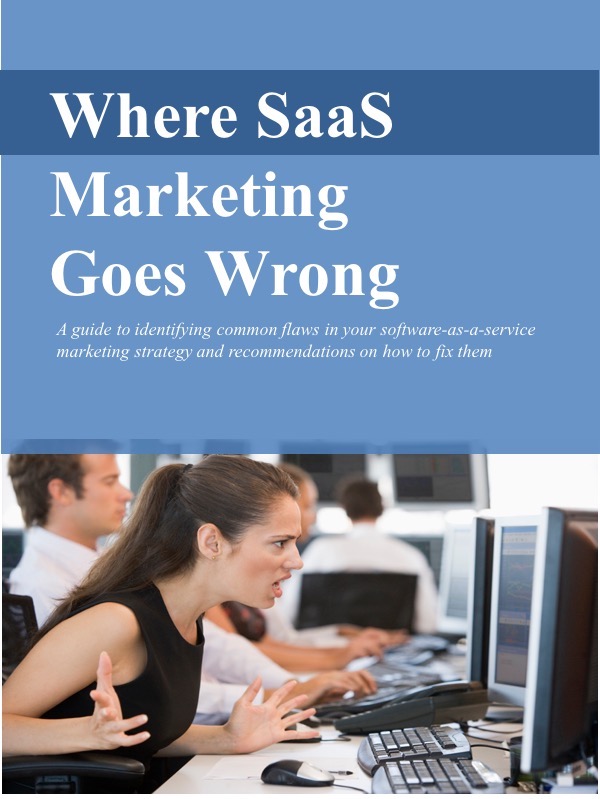SaaS Buyers Are Quick to Buy
/Most SaaS buyers make their purchase decision quickly.
When they need a solution, they do some online research, maybe ask a colleague, try the solution or watch a demo, and then buy.
The whole process might take a few days, maybe a few hours.
There’s no long, drawn out sales engagements, RFIs and RFPs, head-to-head “bake-offs,” contract negotiations, blah, blah, blah. Customers find it, they see it, they like it, they buy it. Done.
Neither vendors nor buyers can afford a long sales process
Why the quick decision?
For one thing, lots of SaaS vendors won’t engage in a long sales cycle. All that schmoozing, demo’ing, and negotiating is too expensive and doesn’t fit their low-touch sales model. They can’t afford it.
More importantly, SaaS buyers can’t afford it either. Or at least they can’t afford all the time.
Remember the SaaS buyer is usually someone whose main job isn’t evaluating and buying technology solutions. It’s not like traditional on-premises software where IT was the gatekeeper and did most of the evaluation.
With SaaS solutions, the end-user is often doing the evaluation. It’s the sales manager who’s evaluating a SaaS sales tool, the finance manager who’s evaluating expense reporting solutions, or the HR manager who’s evaluating a time & attendance tracking solution.
Besides evaluating software, these people have a day job. They manage sales, or finance, or HR.
Rapid deployment and no long-commitment speed up the process
The fact that SaaS is a lot easier to install and deploy and that there’s often no long-term commitment also speeds up the evaluation cycle. Buyers figure they can try something for a few months, and if they’re not happy, they can walk away without much lost.
Enterprise sales could be an exception
Of course there are exceptions to this scenario. Larger enterprises may go through a more formal evaluation process than small or mid-sized businesses. And companies might take more time with applications that they’ll be distributing broadly throughout their organization, those that will need customization, or require a long-term commitment.
But that still leaves a lot of SaaS solutions that will be bought PDQ.
Good news and bad news for SaaS vendors
A shorter evaluation cycle can be good news and bad news for SaaS solution providers.
The good news: They can cut some of the time and expense from the process. Most buyers won’t force vendors through an arduous RFP, a months-long evaluation process, and innumerable exchanges of red-lined contracts.
The bad news: Vendors need to be quick. The evaluation window is only open for a short time. Jump now… or miss your chance.
Once a prospective buyer expresses interest – they call the vendor, download a free trial, ask for information, whatever – the SaaS vendor needs to respond. Not in a few days… now!
That doesn’t always mean they need to get on the phone ASAP. A free trialer might be eager to get a call from the vendor, but other prospects might not be so far along in the process.
But companies should at least acknowledge the person’s interest and provide a way for them to move ahead in the process.
Make a positive impression… quickly
Once vendors do get an opportunity to put their solution in front of the prospective customer – with a demo or a trial, for example – don’t waste that precious time. Knock their socks off in the first few minutes, showing off high-impact features and benefits. There’s no need for a plodding walk-through of every feature and function.
Lost prospects often aren’t really lost
If SaaS buyers didn’t purchase the solution, SaaS vendors shouldn’t necessarily count this as a “lost” sale. In many cases, the prospect just got distracted by other priorities (a.k.a. their real job.)
Once they work through those “distractions” and focus on SaaS solutions again, the vendor wants to still be in front of them. Newsletters, invitations to webinars, news of valuable white papers, for example, can be cost-effective ways to do that.
I often explain to people that marketing SaaS solutions is strategically different from marketing traditional software. Different audience, different message, and different process. The shorter evaluation process is one of the key differences.
Get in sync with your prospective customers. If SaaS buyers are quick to buy, SaaS marketers can’t be slow.
